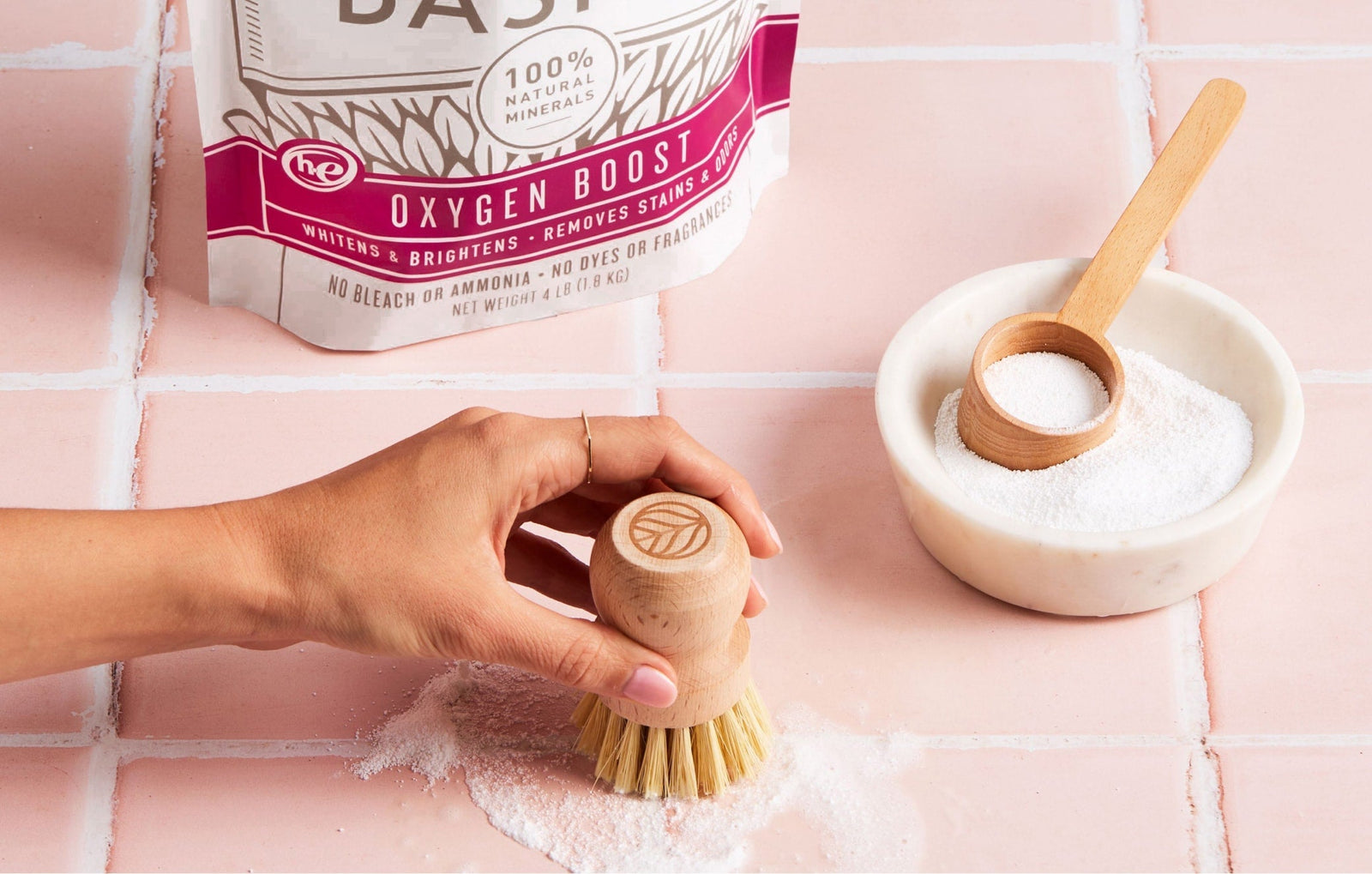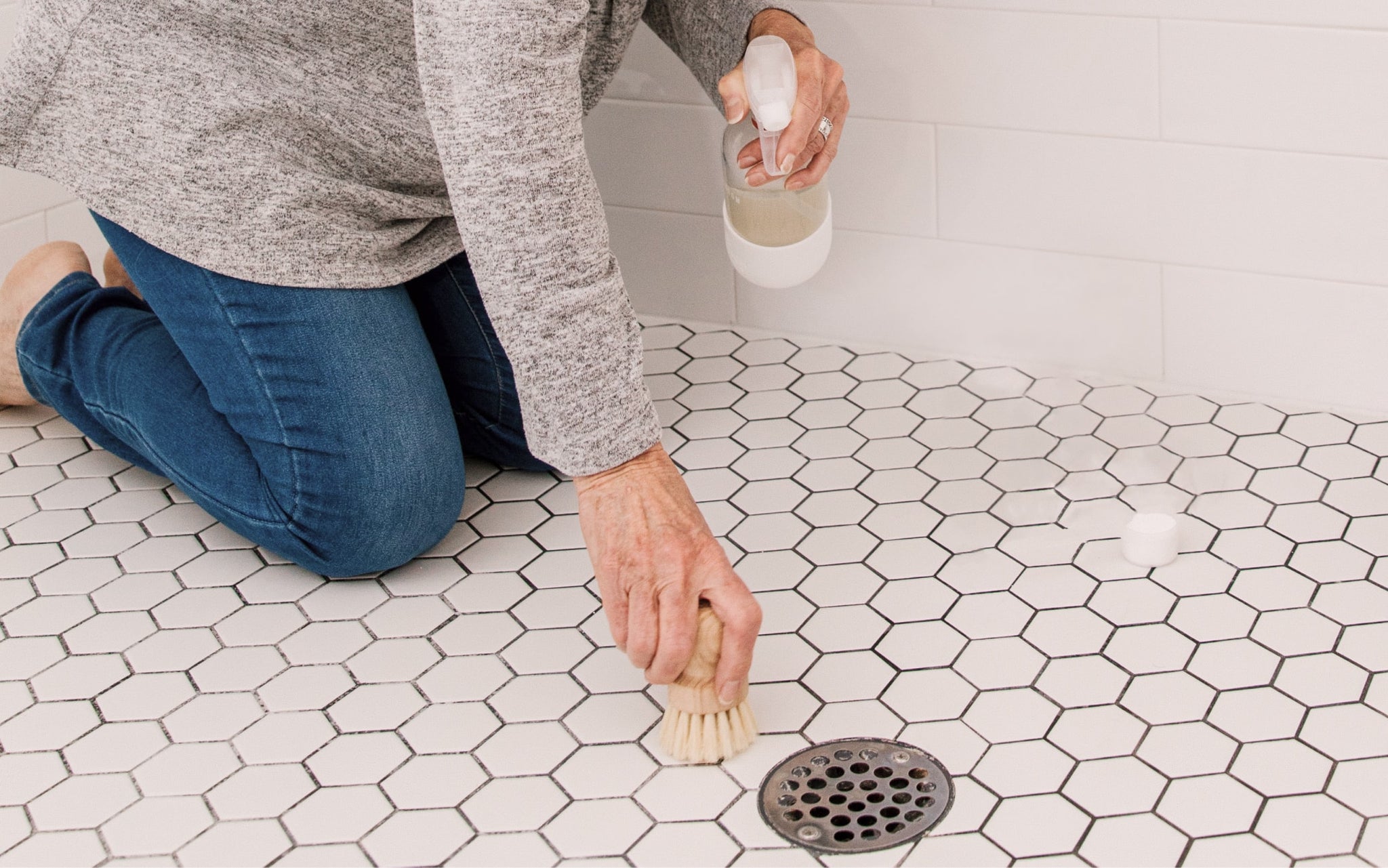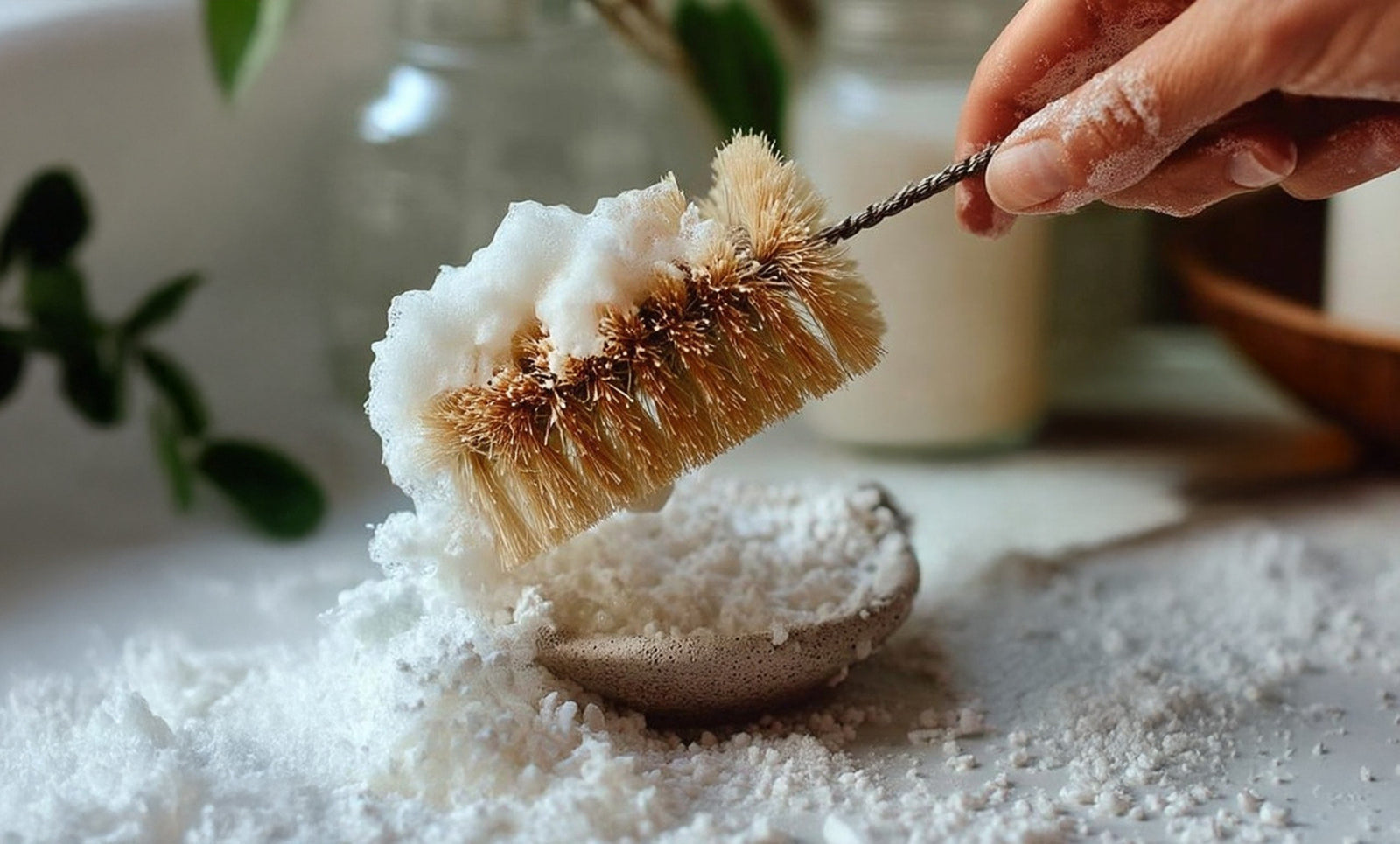How to Remove Mold From Shower Grout Naturally

Nearly everyone has experienced the plight of mold and mildew build-up on tile grout. It’s particularly common in showers and tubs where the combination of soap scum and moist warm air create the perfect breeding ground.
And nearly everyone follows the “standard procedure” for removal: spray the area with a harsh bleach-based solution, wait several minutes, scrub clean, and repeat if necessary.
Today, we’d like to propose a different, healthier way to clean mold from the grout in bathrooms: ditch the toxic bleach! Yes, it is possible to get rid of mold in your shower without polluting your indoor air with chlorine bleach fumes. Today’s article will teach you how (and why) to do it.
Why Remove Mold & Mildew From Grout?
Oftentimes, mold and mildew in tile grout gets overlooked because it’s just so darn common. However, just because it’s common doesn’t mean it’s healthy or safe. Mold in showers, or anywhere else in your home, can create a cascade of health issues including:
- Respiratory illness
- Lowered immunity
- Headaches
- Eye irritation
- Coughing
- Sneezing
- Skin rashes
- And even mood swings.
What’s worse, long-term exposure can lead to even more serious consequences including
- Asthma
- Memory loss
- Hormonal imbalance
- Fatigue
- Chronic sinus infections
- And more
I’ve personally worked with many people in my practice whose health has been turned upside down by the effects of toxic mold in their homes; and these issues can be triggered by something as simple as mold in the shower. So, again just because it’s common doesn’t mean it should be allowed to persist.

Why Bleach is Bad For You & Your Home
First off, if you’ve used straight bleach or bleach-based cleaners to eliminate mold before, don’t beat yourself up. It’s what we’ve all been taught to do for decades. However, it’s important to understand that breathing in chlorine bleach, even in small amounts, can negatively impact on your health—especially if you’re already suffering from a chronic condition.
Bleach is a chlorine-based corrosive substance that is absolutely poisonous if it is inhaled, swallowed, or comes into contact with your skin in certain amounts. When it comes to cleaning with bleach, inhalation is of primary concern as bleach fumes have been shown to immediately irritate the mucous membranes of nose, throat, and mouth and deteriorate your esophagus, lungs, and respiratory system over time. If you’re an otherwise healthy adult with no respiratory issues, you may not notice symptoms straight away, but the cumulative effects are impossible to deny.
For example, research has shown that people regularly exposed to chlorine bleach, such as nurses and factory workers, are at a 30% increased risk of developing COPD
Children are even more vulnerable due to their smaller size and lung capacity per the CDC
Related Reading: The Most Toxic Cleaning Products to Avoid & Safe Swaps
Bleach Can Exacerbate Your Mold Problem
It’s true! Per OSHA

How to Remove Mold in Tile Grout Without Bleach
Now that you understand the importance of keeping mold under control without the use of bleach.
What you'll need:
- Branch Basics Bathroom solution
- Branch Basics Oxygen Boost
- 3% hydrogen peroxide - optional
See our recommendations for essential cleaning tools to make the process easier.

Here’s how to remove mold from your shower grout, naturally:
- Spray grout lines liberally with Branch Basics Bathroom solution.
- Sprinkle with Oxygen Boost. Wet the Oxygen Boost with a spray of Bathroom solution.
- Scrub with toothbrush or scrub brush.
- Let sit 1-5 minutes (the longer the better).
- Rinse or wipe off with a microfiber cloth to remove the mold.
- As with germs, just cleaning with soap and water removes the mold. The next step is optional.
- Finish by spraying straight hydrogen peroxide on the grout lines (you can add a spray bottle cap directly to your hydrogen peroxide bottle to make this easy), and let dry.
Controlling soap scum and humidity/moisture is your best defense against bathroom mold.
Use Branch Basics Bathroom solution regularly to remove soap scum, use a towel to dry off excess water after showers and baths, ventilate your bathroom by using your fan, opening a window, or running a dehumidifier and you will have far less mold issues (if any).
Related Reading: How to Clean Floors with Branch Basics
How to Prevent Mold & Mildew Growth in Your Shower
While keeping your tile sparkling clean can help prevent mold growth, there are other measures you can take to keep your space mold-free:
- Squeegee or wipe down shower tile after each shower session
- Do not let wet towels hang in the bathroom. This promotes high humidity in the bathroom. Remove them, hang outside to dry, or dry in your dryer.
- Maintain proper air circulation in bathroom and moist areas.
- Turn on your bathroom exhaust fan for 30-45 minutes after taking a shower or bath.
- Keep your bathroom space tidy, remove unnecessary containers and other items
- Replace old windows that can let in moisture
- Replace wet/moldy items in the space.
Related Reading: 5 Best Natural Toilet Bowl Cleaners
Toss the Toxins With Branch Basics
Just because something is common, like cleaning mold on tile grout with household bleach, doesn’t mean it’s safe. By using our safe mold removal method as outlined above, you can easily take care of mold problems in your bathrooms without causing any future health issues... a healthy home win-win!
To get started on ditching the toxins in your household, check out the Branch Basics Trial Kit and the Glass Cleaning Essentials Kit.

Marilee Nelson
Marilee Nelson is an Environmental Toxins expert who has spent nearly 30 years advocating for the chemically-sensitive and chronically-ill. She is a Board Certified Nutritionist, Certified Bau-Biologist and Bau-Biology Inspector and specializes in Food As Medicine. She has helped thousands of families and individuals identify, heal and recover from toxic exposures and is on a mission to revolutionize the way American families view their health.








